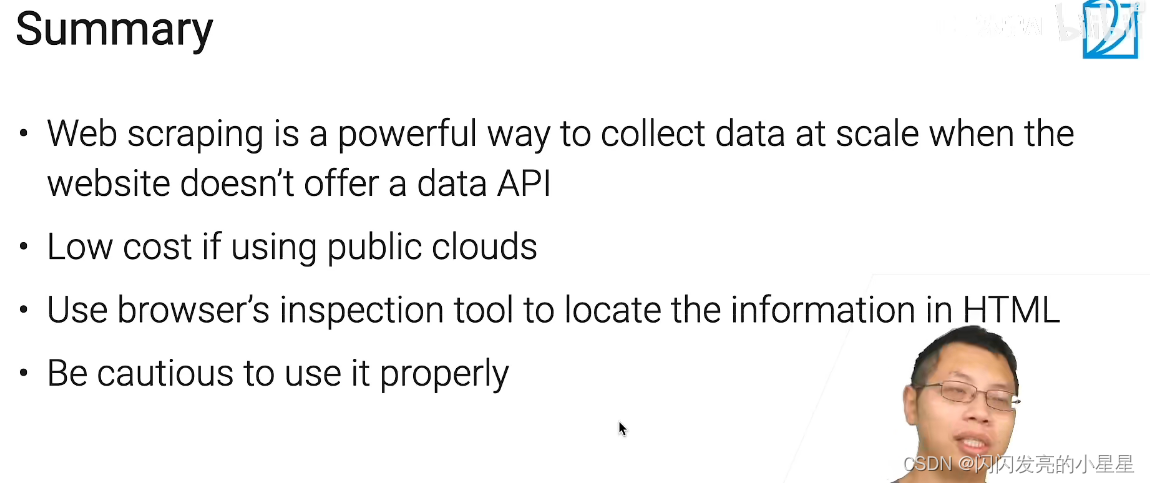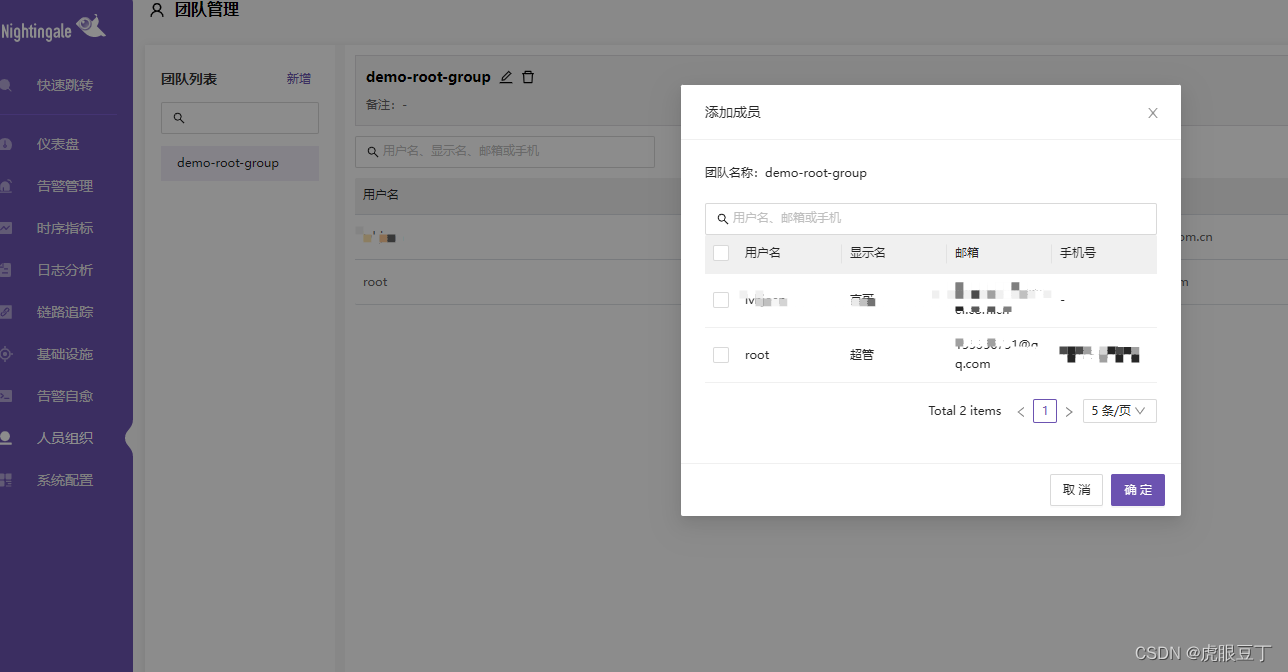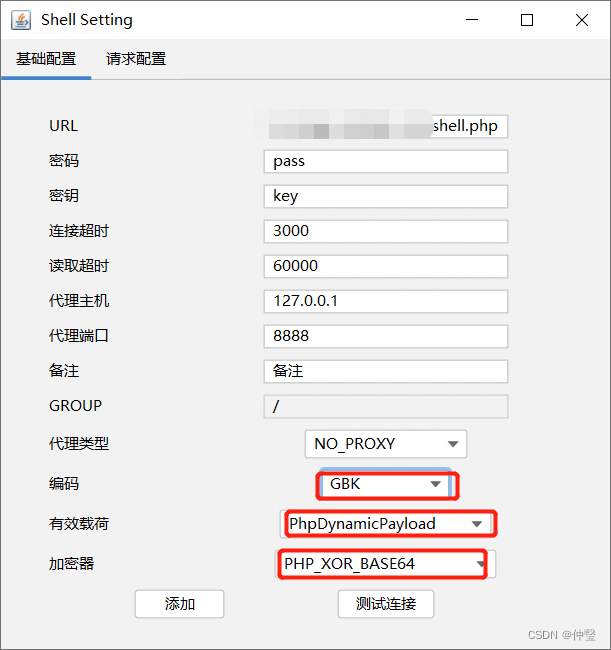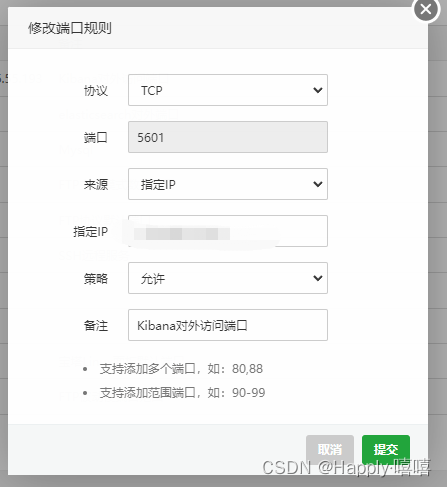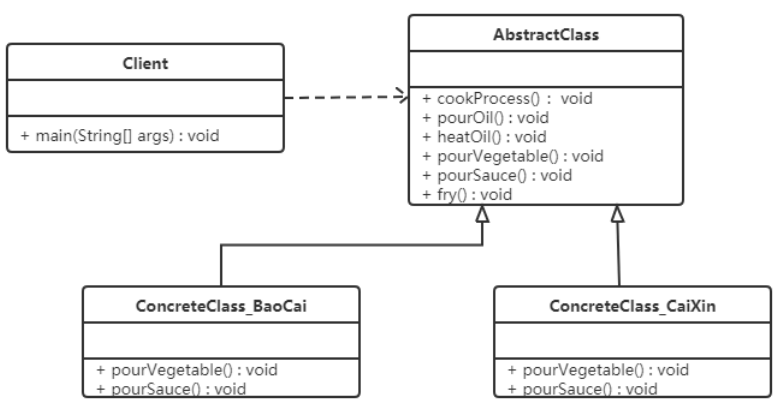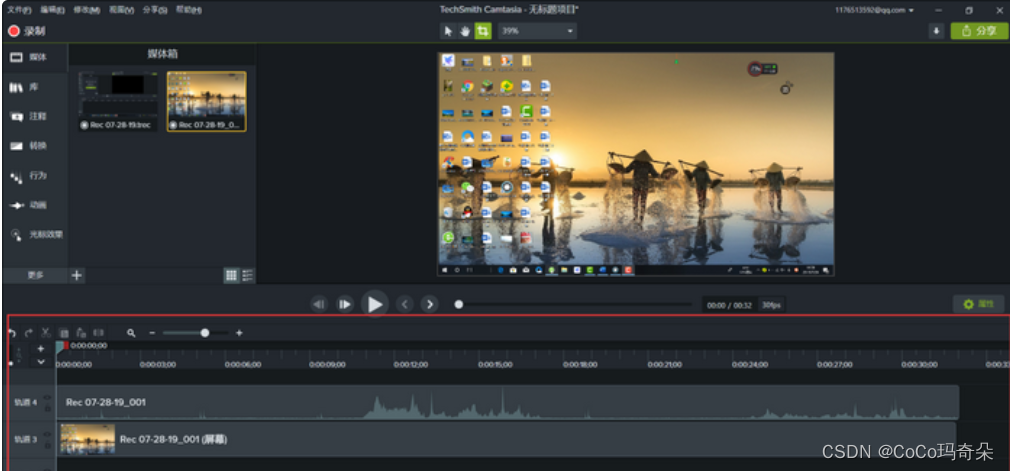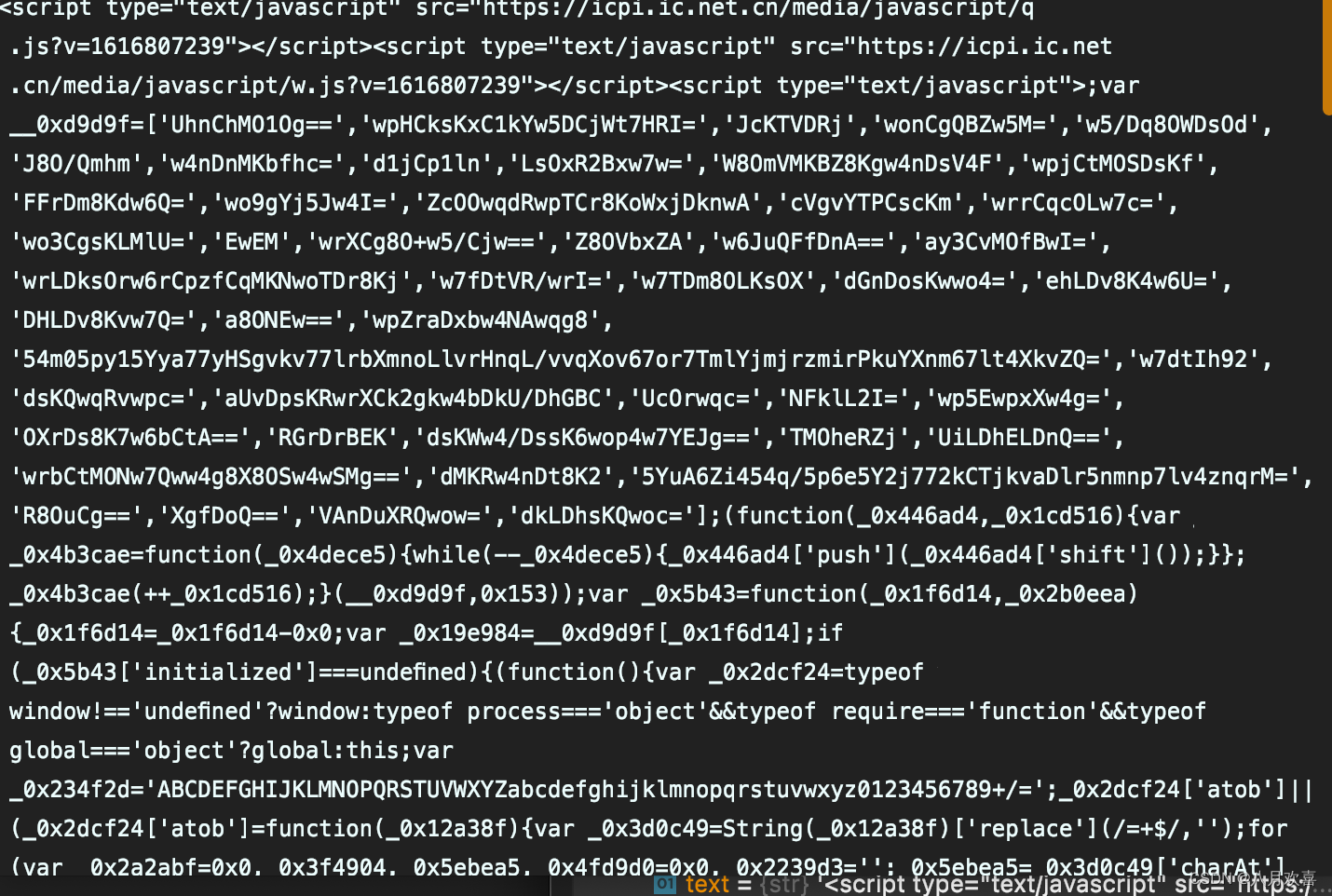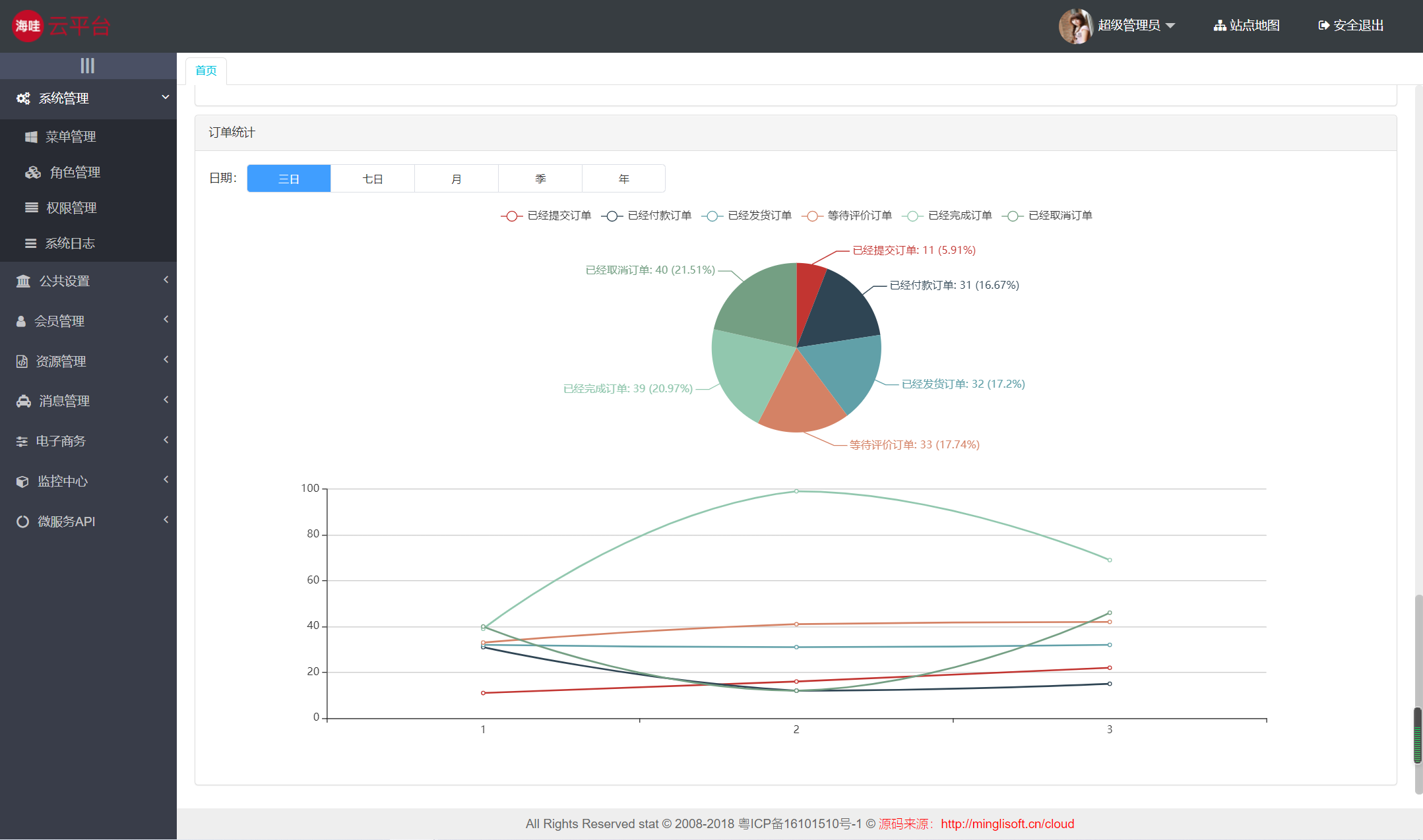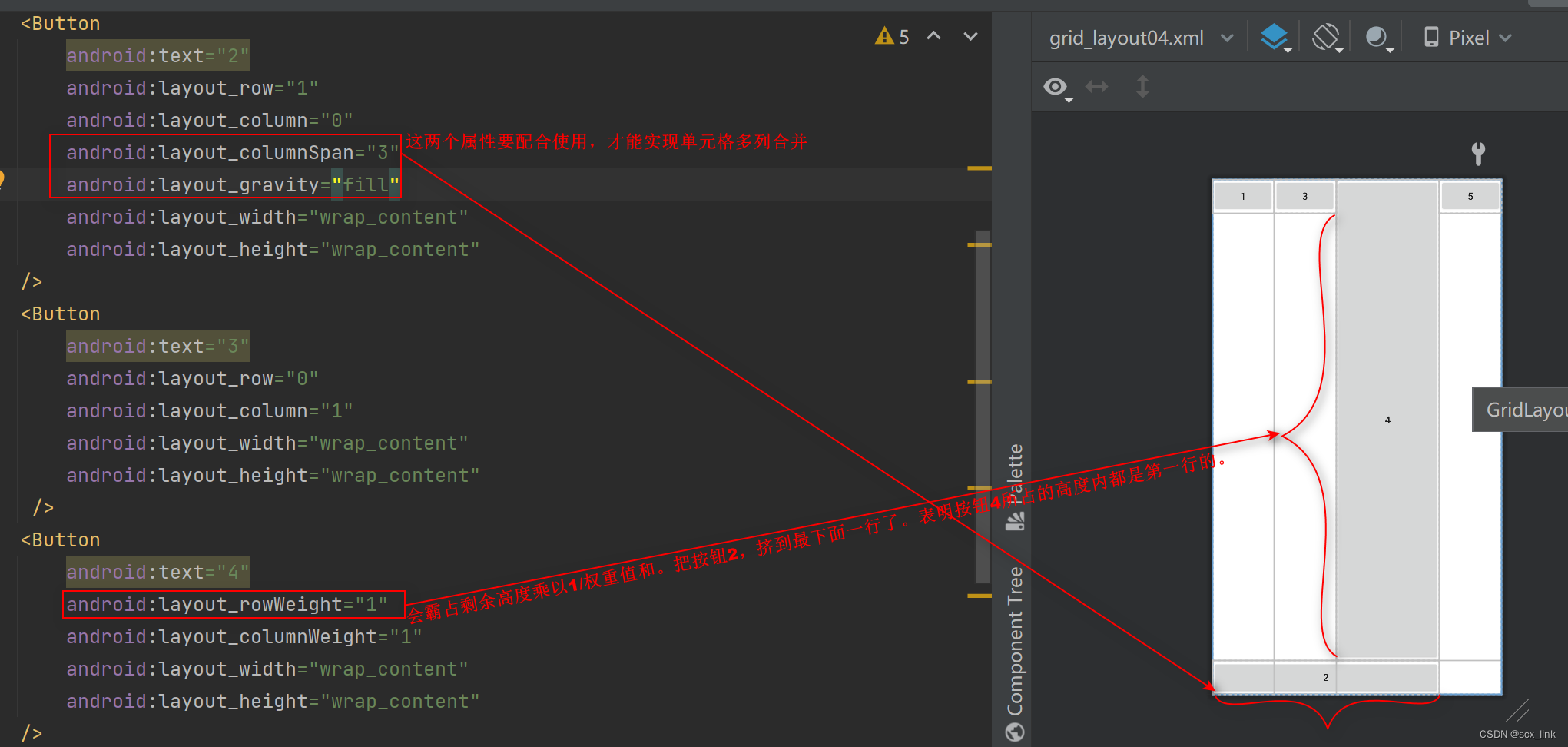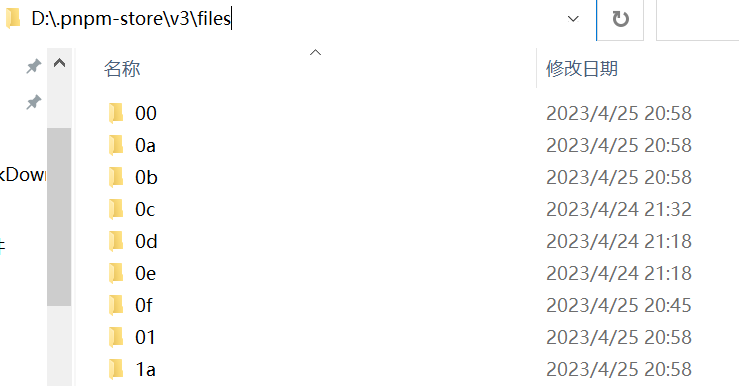作者:京东物流 杨建民
一、Sentinel简介
Sentinel 以流量为切入点,从流量控制、熔断降级、系统负载保护等多个维度保护服务的稳定性。
Sentinel 具有以下特征:
- 丰富的应用场景:秒杀(即突发流量控制在系统容量可以承受的范围)、消息削峰填谷、集群流量控制、实时熔断下游不可用应用等。
- 完备的实时监控:Sentinel 同时提供实时的监控功能。您可以在控制台中看到接入应用的单台机器秒级数据,甚至 500 台以下规模的集群的汇总运行情况。
- 广泛的开源生态:Sentinel 提供开箱即用的与其它开源框架/库的整合模块,例如与 Spring Cloud、Apache Dubbo、gRPC、Quarkus 的整合。您只需要引入相应的依赖并进行简单的配置即可快速地接入 Sentinel。同时 Sentinel 提供 Java/Go/C++ 等多语言的原生实现。
- 完善的 SPI 扩展机制:Sentinel 提供简单易用、完善的 SPI 扩展接口。您可以通过实现扩展接口来快速地定制逻辑。例如定制规则管理、适配动态数据源等

有关Sentinel的详细介绍以及和Hystrix的区别可以自行网上检索,推荐一篇文章:https://mp.weixin.qq.com/s/Q7Xv8cypQFrrOQhbd9BOXw
本次主要使用了Sentinel的降级、限流、系统负载保护功能
二、Sentinel关键技术源码解析

无论是限流、降级、负载等控制手段,大致流程如下:
•StatisticSlot 则用于记录、统计不同维度的 runtime 指标监控信息
•责任链依次触发后续 slot 的 entry 方法,如 SystemSlot、FlowSlot、DegradeSlot 等的规则校验;
•当后续的 slot 通过,没有抛出 BlockException 异常,说明该资源被成功调用,则增加执行线程数和通过的请求数等信息。
关于数据统计,主要会牵扯到 ArrayMetric、BucketLeapArray、MetricBucket、WindowWrap 等类。
项目结构

以下主要分析core包里的内容
2.1注解入口


2.1.1 Entry、Context、Node
SphU门面类的方法出参都是Entry,Entry可以理解为每次进入资源的一个凭证,如果调用SphO.entry()或者SphU.entry()能获取Entry对象,代表获取了凭证,没有被限流,否则抛出一个BlockException。
Entry中持有本次对资源调用的相关信息:
•createTime:创建该Entry的时间戳。
•curNode:Entry当前是在哪个节点。
•orginNode:Entry的调用源节点。
•resourceWrapper:Entry关联的资源信息。

Entry是一个抽象类,CtEntry是Entry的实现,CtEntry持有Context和调用链的信息
Context的源码注释如下,
This class holds metadata of current invocation
Node的源码注释
Holds real-time statistics for resources
Node中保存了对资源的实时数据的统计,Sentinel中的限流或者降级等功能就是通过Node中的数据进行判断的。Node是一个接口,里面定义了各种操作request、exception、rt、qps、thread的方法。

在细看Node实现时,不难发现LongAddr的使用,关于LongAddr和DoubleAddr都是java8 java.util.concurrent.atomic里的内容,感兴趣的小伙伴可以再深入研究一下,这两个是高并发下计数功能非常优秀的数据结构,实际应用场景里需要计数时可以考虑使用。
关于Node的介绍后续还会深入,此处大致先提一下这个概念。
2.2 初始化
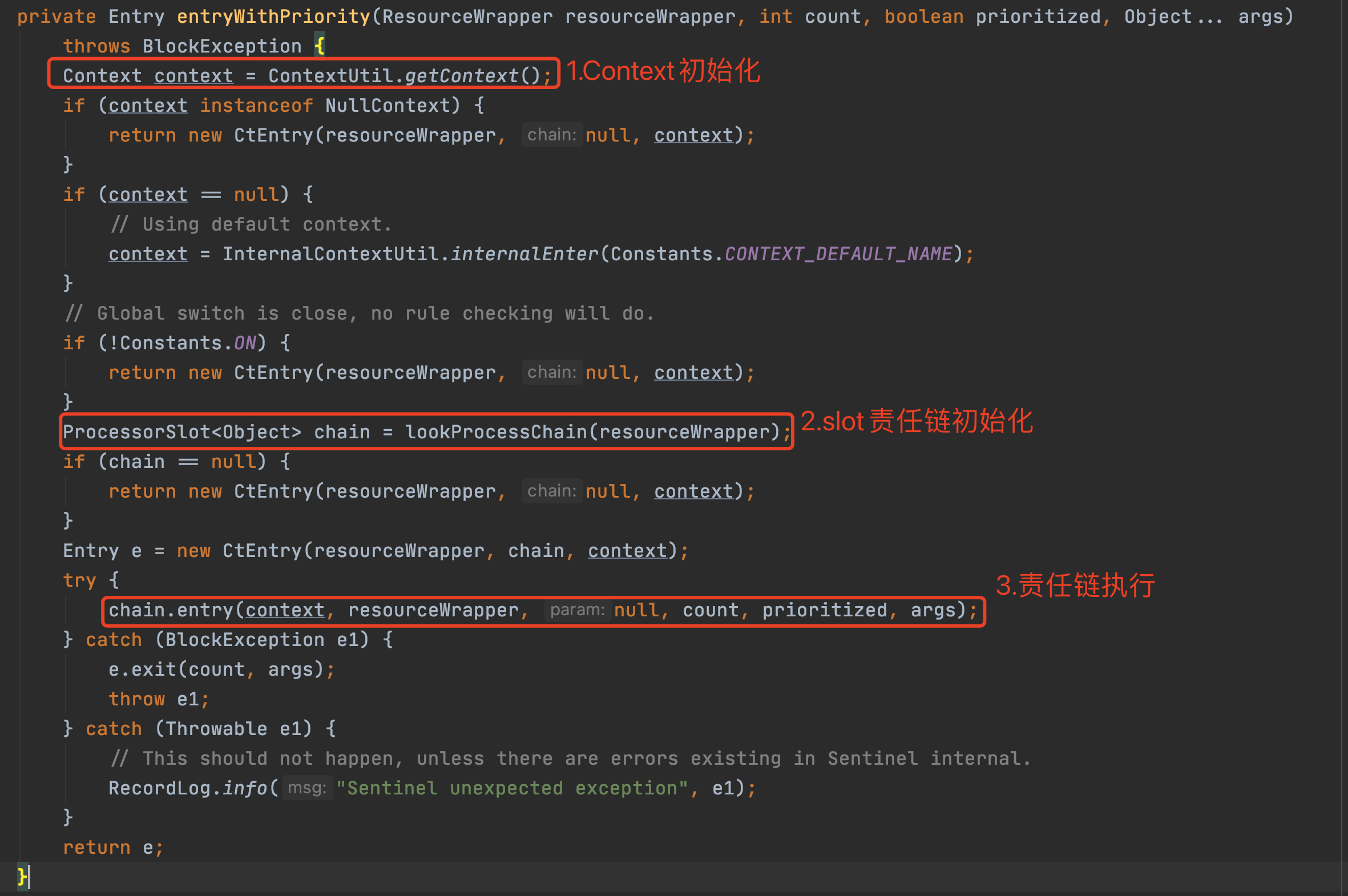
2.2.1 Context初始化
在初始化slot责任链部分前,还执行了context的初始化,里面涉及几个重要概念,需要解释一下:

可以发现在Context初始化的过程中,会把EntranceNode加入到Root子节点中(实际Root本身是一个特殊的EntranceNode),并把EntranceNode放到contextNameNodeMap中。
之前简单提到过Node,是用来统计数据用的,不同Node功能如下:
•Node:用于完成数据统计的接口
•StatisticNode:统计节点,是Node接口的实现类,用于完成数据统计
•EntranceNode:入口节点,一个Context会有一个入口节点,用于统计当前Context的总体流量数据
•DefaultNode:默认节点,用于统计一个资源在当前Context中的流量数据
•ClusterNode:集群节点,用于统计一个资源在所有Context中的总体流量数据

protected static Context trueEnter(String name, String origin) {
Context context = contextHolder.get();
if (context == null) {
Map<String, DefaultNode> localCacheNameMap = contextNameNodeMap;
DefaultNode node = localCacheNameMap.get(name);
if (node == null) {
if (localCacheNameMap.size() > Constants.MAX_CONTEXT_NAME_SIZE) {
setNullContext();
return NULL_CONTEXT;
} else {
LOCK.lock();
try {
node = contextNameNodeMap.get(name);
if (node == null) {
if (contextNameNodeMap.size() > Constants.MAX_CONTEXT_NAME_SIZE) {
setNullContext();
return NULL_CONTEXT;
} else {
node = new EntranceNode(new StringResourceWrapper(name, EntryType.IN), null);
// Add entrance node.
Constants.ROOT.addChild(node);
Map<String, DefaultNode> newMap = new HashMap<>(contextNameNodeMap.size() + 1);
newMap.putAll(contextNameNodeMap);
newMap.put(name, node);
contextNameNodeMap = newMap;
}
}
} finally {
LOCK.unlock();
}
}
}
context = new Context(node, name);
context.setOrigin(origin);
contextHolder.set(context);
}
return context;
}
2.2.2 通过SpiLoader默认初始化8个slot

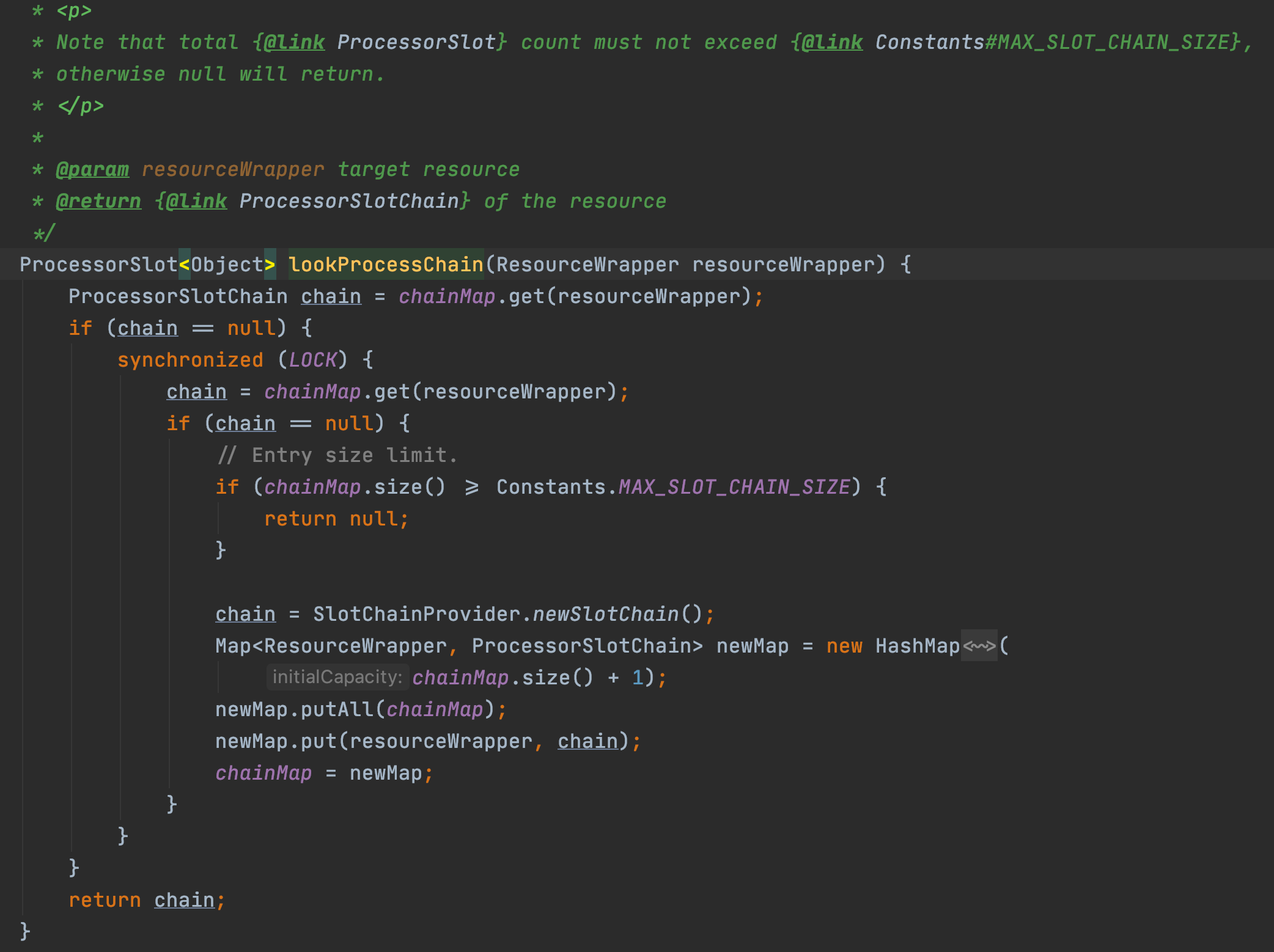
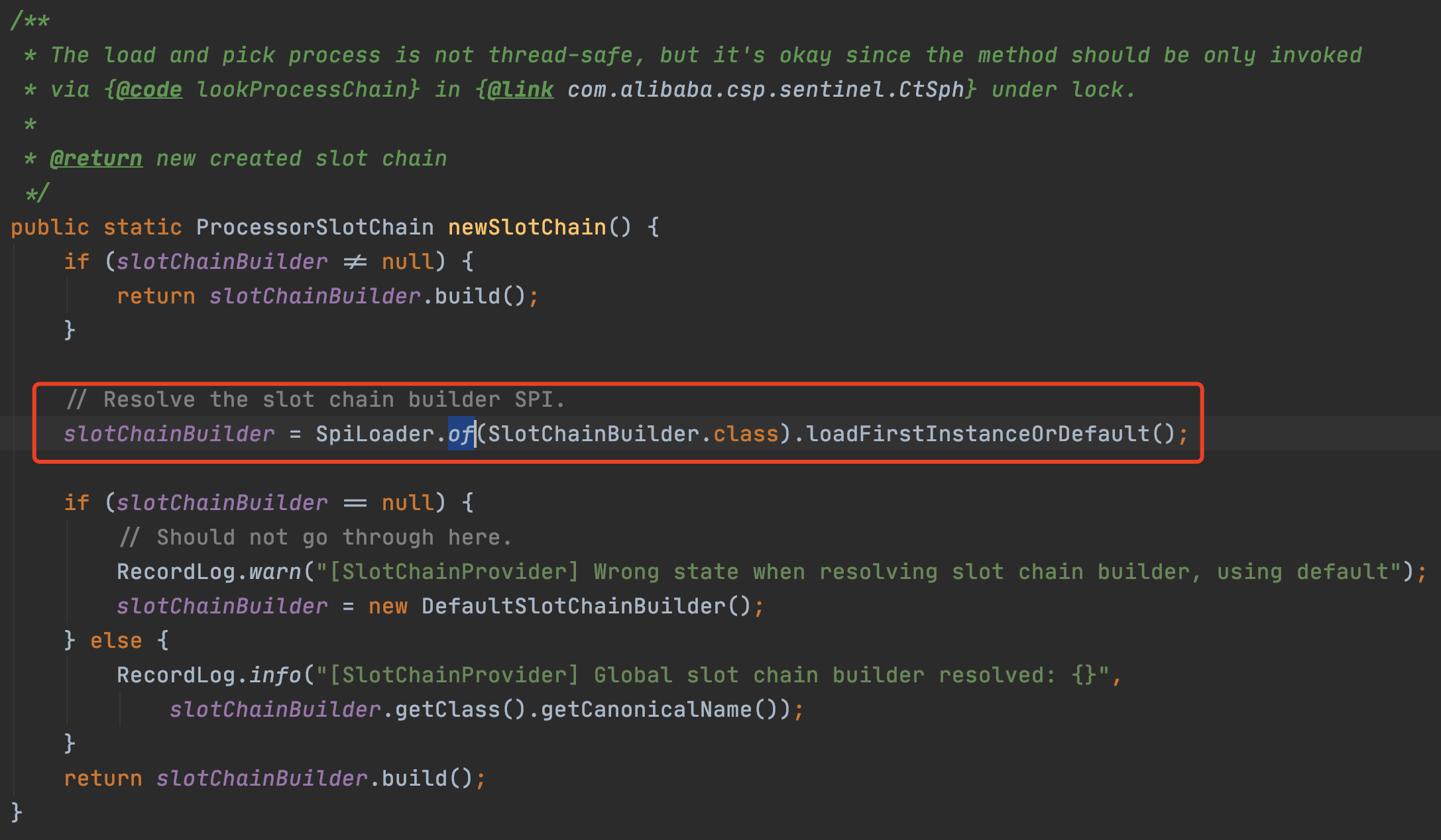


每个slot的主要职责如下:
•NodeSelectorSlot 负责收集资源的路径,并将这些资源的调用路径,以树状结构存储起来,用于根据调用路径来限流降级;
•ClusterBuilderSlot 则用于存储资源的统计信息以及调用者信息,例如该资源的 RT, QPS, thread count 等等,这些信息将用作为多维度限流,降级的依据;
•StatisticSlot 则用于记录、统计不同纬度的 runtime 指标监控信息;
•FlowSlot 则用于根据预设的限流规则以及前面 slot 统计的状态,来进行流量控制;
•AuthoritySlot 则根据配置的黑白名单和调用来源信息,来做黑白名单控制;
•DegradeSlot 则通过统计信息以及预设的规则,来做熔断降级;
•SystemSlot 则通过系统的状态,例如 集群QPS、线程数、RT、负载 等,来控制总的入口流量;
2.3 StatisticSlot
2.3.1 Node
深入看一下Node,因为统计信息都在里面,后面不论是限流、熔断、负载保护等都是结合规则+统计信息判断是否要执行

从Node的源码注释看,它会持有资源维度的实时统计数据,以下是接口里的方法定义,可以看到totalRequest、totalPass、totalSuccess、blockRequest、totalException、passQps等很多request、qps、thread的相关方法:
/**
* Holds real-time statistics for resources.
*
* @author qinan.qn
* @author leyou
* @author Eric Zhao
*/
public interface Node extends OccupySupport, DebugSupport {
long totalRequest();
long totalPass();
long totalSuccess();
long blockRequest();
long totalException();
double passQps();
double blockQps();
double totalQps();
double successQps();
……
}
2.3.2 StatisticNode
我们先从最基础的StatisticNode开始看,源码给出的定位是:
The statistic node keep three kinds of real-time statistics metrics:
metrics in second level ({@code rollingCounterInSecond})
metrics in minute level ({@code rollingCounterInMinute})
thread count
StatisticNode只有四个属性,除了之前提到过的LongAddr类型的curThreadNum外,还有两个属性是Metric对象,通过入参已经属性命名可以看出,一个用于秒级,一个用于分钟级统计。接下来我们就要看看Metric
// StatisticNode持有两个Metric,一个秒级一个分钟级,由入参可知,秒级统计划分了两个时间窗口,窗口程度是500ms
private transient volatile Metric rollingCounterInSecond = new ArrayMetric(SampleCountProperty.SAMPLE_COUNT,
IntervalProperty.INTERVAL);
// 分钟级统计划分了60个时间窗口,窗口长度是1000ms
private transient Metric rollingCounterInMinute = new ArrayMetric(60, 60 * 1000, false);
/**
* The counter for thread count.
*/
private LongAdder curThreadNum = new LongAdder();
/**
* The last timestamp when metrics were fetched.
*/
private long lastFetchTime = -1;
ArrayMetric只有一个属性LeapArray,其余都是用于统计的方法,LeapArray是sentinel中统计最基本的数据结构,这里有必要详细看一下,总体就是根据timeMillis去获取一个bucket,分为:没有创建、有直接返回、被废弃后的reset三种场景。
//以分钟级的统计属性为例,看一下时间窗口初始化过程
private transient Metric rollingCounterInMinute = new ArrayMetric(60, 60 * 1000, false);
public LeapArray(int sampleCount, int intervalInMs) {
AssertUtil.isTrue(sampleCount > 0, "bucket count is invalid: " + sampleCount);
AssertUtil.isTrue(intervalInMs > 0, "total time interval of the sliding window should be positive");
AssertUtil.isTrue(intervalInMs % sampleCount == 0, "time span needs to be evenly divided");
// windowLengthInMs = 60*1000 / 60 = 1000 滑动窗口时间长度,可见sentinel默认将单位时间分为了60个滑动窗口进行数据统计
this.windowLengthInMs = intervalInMs / sampleCount;
// 60*1000
this.intervalInMs = intervalInMs;
// 60
this.intervalInSecond = intervalInMs / 1000.0;
// 60
this.sampleCount = sampleCount;
// 数组长度60
this.array = new AtomicReferenceArray<>(sampleCount);
}
/**
* Get bucket item at provided timestamp.
*
* @param timeMillis a valid timestamp in milliseconds
* @return current bucket item at provided timestamp if the time is valid; null if time is invalid
*/
public WindowWrap<T> currentWindow(long timeMillis) {
if (timeMillis < 0) {
return null;
}
// 根据当前时间戳算一个数组索引
int idx = calculateTimeIdx(timeMillis);
// Calculate current bucket start time.
// timeMillis % 1000
long windowStart = calculateWindowStart(timeMillis);
/*
* Get bucket item at given time from the array.
*
* (1) Bucket is absent, then just create a new bucket and CAS update to circular array.
* (2) Bucket is up-to-date, then just return the bucket.
* (3) Bucket is deprecated, then reset current bucket.
*/
while (true) {
WindowWrap<T> old = array.get(idx);
if (old == null) {
/*
* B0 B1 B2 NULL B4
* ||_______|_______|_______|_______|_______||___
* 200 400 600 800 1000 1200 timestamp
* ^
* time=888
* bucket is empty, so create new and update
*
* If the old bucket is absent, then we create a new bucket at {@code windowStart},
* then try to update circular array via a CAS operation. Only one thread can
* succeed to update, while other threads yield its time slice.
*/
// newEmptyBucket 方法重写,秒级和分钟级统计对象实现不同
WindowWrap<T> window = new WindowWrap<T>(windowLengthInMs, windowStart, newEmptyBucket(timeMillis));
if (array.compareAndSet(idx, null, window)) {
// Successfully updated, return the created bucket.
return window;
} else {
// Contention failed, the thread will yield its time slice to wait for bucket available.
Thread.yield();
}
} else if (windowStart == old.windowStart()) {
/*
* B0 B1 B2 B3 B4
* ||_______|_______|_______|_______|_______||___
* 200 400 600 800 1000 1200 timestamp
* ^
* time=888
* startTime of Bucket 3: 800, so it's up-to-date
*
* If current {@code windowStart} is equal to the start timestamp of old bucket,
* that means the time is within the bucket, so directly return the bucket.
*/
return old;
} else if (windowStart > old.windowStart()) {
/*
* (old)
* B0 B1 B2 NULL B4
* |_______||_______|_______|_______|_______|_______||___
* ... 1200 1400 1600 1800 2000 2200 timestamp
* ^
* time=1676
* startTime of Bucket 2: 400, deprecated, should be reset
*
* If the start timestamp of old bucket is behind provided time, that means
* the bucket is deprecated. We have to reset the bucket to current {@code windowStart}.
* Note that the reset and clean-up operations are hard to be atomic,
* so we need a update lock to guarantee the correctness of bucket update.
*
* The update lock is conditional (tiny scope) and will take effect only when
* bucket is deprecated, so in most cases it won't lead to performance loss.
*/
if (updateLock.tryLock()) {
try {
// Successfully get the update lock, now we reset the bucket.
return resetWindowTo(old, windowStart);
} finally {
updateLock.unlock();
}
} else {
// Contention failed, the thread will yield its time slice to wait for bucket available.
Thread.yield();
}
} else if (windowStart < old.windowStart()) {
// Should not go through here, as the provided time is already behind.
return new WindowWrap<T>(windowLengthInMs, windowStart, newEmptyBucket(timeMillis));
}
}
}
// 持有一个时间窗口对象的数据,会根据当前时间戳除以时间窗口长度然后散列到数组中
private int calculateTimeIdx(/*@Valid*/ long timeMillis) {
long timeId = timeMillis / windowLengthInMs;
// Calculate current index so we can map the timestamp to the leap array.
return (int)(timeId % array.length());
}
WindowWrap持有了windowLengthInMs, windowStart和LeapArray(分钟统计实现是BucketLeapArray,秒级统计实现是OccupiableBucketLeapArray),对于分钟级别的统计,MetricBucket维护了一个longAddr数组和一个配置的minRT
/**
* The fundamental data structure for metric statistics in a time span.
*
* @author jialiang.linjl
* @author Eric Zhao
* @see LeapArray
*/
public class BucketLeapArray extends LeapArray<MetricBucket> {
public BucketLeapArray(int sampleCount, int intervalInMs) {
super(sampleCount, intervalInMs);
}
@Override
public MetricBucket newEmptyBucket(long time) {
return new MetricBucket();
}
@Override
protected WindowWrap<MetricBucket> resetWindowTo(WindowWrap<MetricBucket> w, long startTime) {
// Update the start time and reset value.
w.resetTo(startTime);
w.value().reset();
return w;
}
}

对于秒级统计,QPS=20场景下,如何准确统计的问题,此处用到了另外一个LeapArry实现FutureBucketLeapArray,至于秒级统计如何保证没有统计误差,读者可以再研究一下FutureBucketLeapArray的上下文就好。
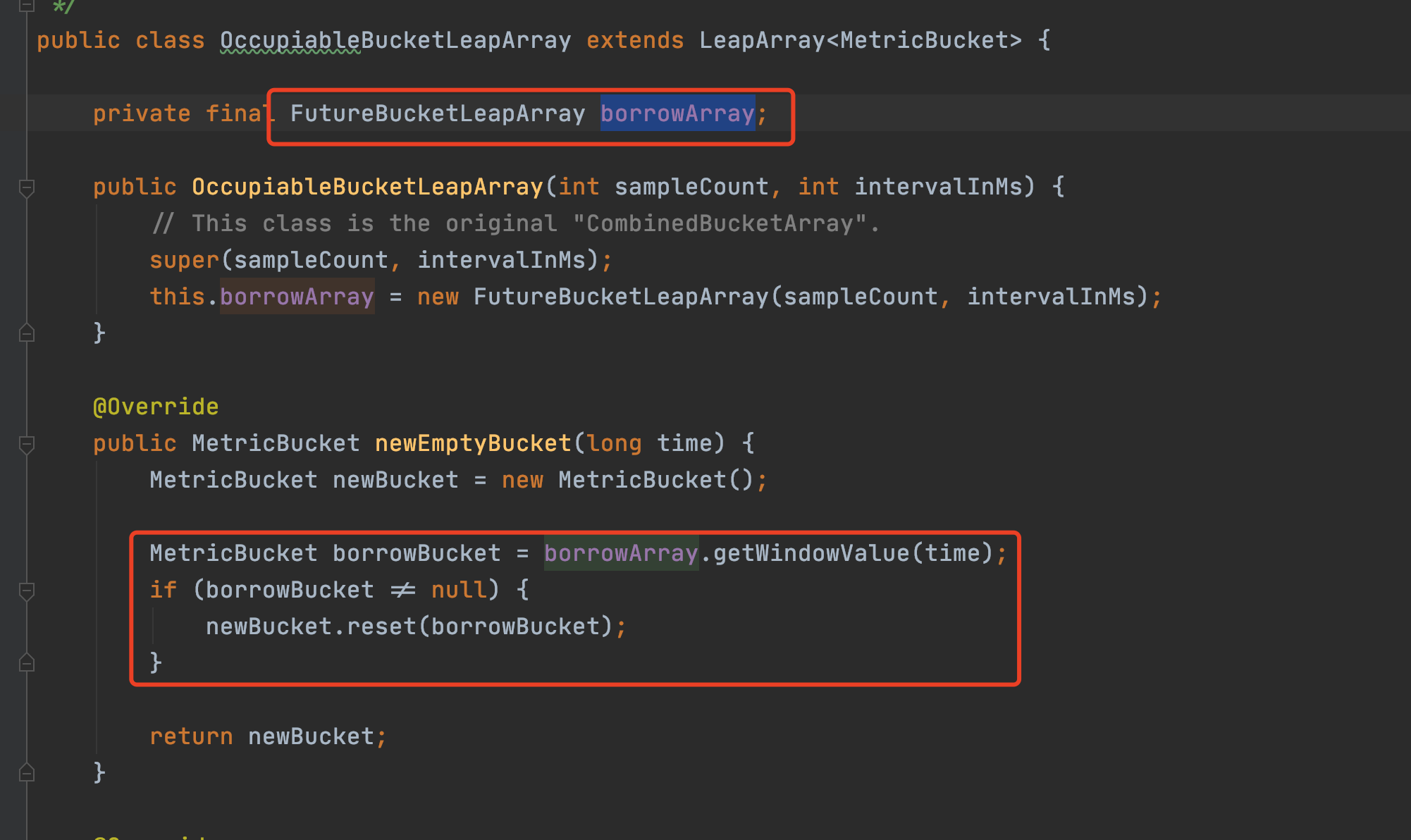
2.4 FlowSlot
2.4.1 常见限流算法
介绍sentinel限流实现前,先介绍一下常见限流算法,基本分为三种:计数器、漏斗、令牌桶。
计数器算法
顾名思义,计数器算法就是统计某个时间段内的请求,每单位时间加1,然后与配置的限流值(最大QPS)进行比较,如果超出则触发限流。但是这种算法不能做到“平滑限流”,以1s为单位时间,100QPS为限流值为例,如下图,会出现某时段超出限流值的情况

因此在单纯计数器算法上,又出现了滑动窗口计数器算法,我们将统计时间细分,比如将1s统计时长分为5个时间窗口,通过滚动统计所有时间窗口的QPS作为系统实际的QPS的方式,就能解决上述临界统计问题,后续我们看sentinel源码时也能看到类似操作。

漏斗算法

不论流量有多大都会先到漏桶中,然后以均匀的速度流出。如何在代码中实现这个匀速呢?比如我们想让匀速为100q/s,那么我们可以得到每流出一个流量需要消耗10ms,类似一个队列,每隔10ms从队列头部取出流量进行放行,而我们的队列也就是漏桶,当流量大于队列的长度的时候,我们就可以拒绝超出的部分。
漏斗算法同样的也有一定的缺点:无法应对突发流量。比如一瞬间来了100个请求,在漏桶算法中只能一个一个的过去,当最后一个请求流出的时候时间已经过了一秒了,所以漏斗算法比较适合请求到达比较均匀,需要严格控制请求速率的场景。
令牌桶算法
令牌桶算法和漏斗算法比较类似,区别是令牌桶存放的是令牌数量不是请求数量,令牌桶可以根据自身需求多样性得管理令牌的生产和消耗,可以解决突发流量的问题。
2.4.2 单机限流模式
接下来我们看一下Sentinel中的限流实现,相比上述基本限流算法,Sentinel限流的第一个特性就是引入“资源”的概念,可以细粒度多样性的支持特定资源、关联资源、指定链路的限流。
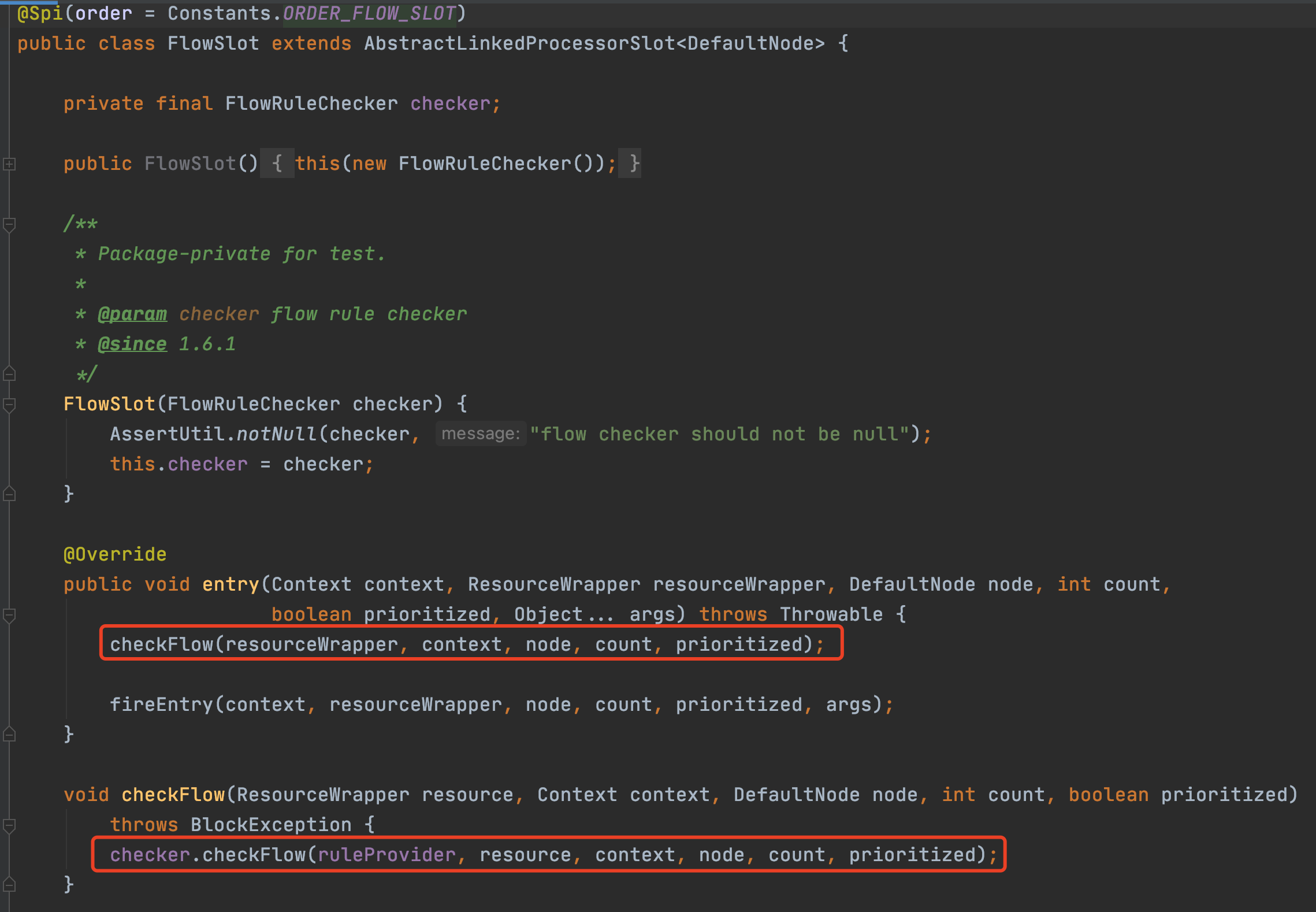
FlowSlot的主要逻辑都在FlowRuleChecker里,介绍之前,我们先看一下Sentinel关于规则的模型描述,下图分别是限流、访问控制规则、系统保护规则(Linux负载)、降级规则

/**
* 流量控制两种模式
* 0: thread count(当调用该api的线程数达到阈值的时候,进行限流)
* 1: QPS(当调用该api的QPS达到阈值的时候,进行限流)
*/
private int grade = RuleConstant.FLOW_GRADE_QPS;
/**
* 流量控制阈值,值含义与grade有关
*/
private double count;
/**
* 调用关系限流策略(可以支持关联资源或指定链路的多样性限流需求)
* 直接(api 达到限流条件时,直接限流)
* 关联(当关联的资源达到限流阈值时,就限流自己)
* 链路(只记录指定链路上的流量)
* {@link RuleConstant#STRATEGY_DIRECT} for direct flow control (by origin);
* {@link RuleConstant#STRATEGY_RELATE} for relevant flow control (with relevant resource);
* {@link RuleConstant#STRATEGY_CHAIN} for chain flow control (by entrance resource).
*/
private int strategy = RuleConstant.STRATEGY_DIRECT;
/**
* Reference resource in flow control with relevant resource or context.
*/
private String refResource;
/**
* 流控效果:
* 0. default(reject directly),直接拒绝,抛异常FlowException
* 1. warm up, 慢启动模式(根据coldFactor(冷加载因子,默认3)的值,从阈值/coldFactor,经过预热时长,才达到设置的QPS阈值)
* 2. rate limiter 排队等待
* 3. warm up + rate limiter
*/
private int controlBehavior = RuleConstant.CONTROL_BEHAVIOR_DEFAULT;
private int warmUpPeriodSec = 10;
/**
* Max queueing time in rate limiter behavior.
*/
private int maxQueueingTimeMs = 500;
/**
* 是否集群限流,默认为否
*/
private boolean clusterMode;
/**
* Flow rule config for cluster mode.
*/
private ClusterFlowConfig clusterConfig;
/**
* The traffic shaping (throttling) controller.
*/
private TrafficShapingController controller;
接着我们继续分析FlowRuleChecker


canPassCheck第一步会好看limitApp,这个是结合访问授权限制规则使用的,默认是所有。

private static boolean passLocalCheck(FlowRule rule, Context context, DefaultNode node, int acquireCount,
boolean prioritized) {
// 根据策略选择Node来进行统计(可以是本身Node、关联的Node、指定的链路)
Node selectedNode = selectNodeByRequesterAndStrategy(rule, context, node);
if (selectedNode == null) {
return true;
}
return rule.getRater().canPass(selectedNode, acquireCount, prioritized);
}
static Node selectNodeByRequesterAndStrategy(/*@NonNull*/ FlowRule rule, Context context, DefaultNode node) {
// limitApp是访问控制使用的,默认是default,不限制来源
String limitApp = rule.getLimitApp();
// 拿到限流策略
int strategy = rule.getStrategy();
String origin = context.getOrigin();
// 基于调用来源做鉴权
if (limitApp.equals(origin) && filterOrigin(origin)) {
if (strategy == RuleConstant.STRATEGY_DIRECT) {
// Matches limit origin, return origin statistic node.
return context.getOriginNode();
}
//
return selectReferenceNode(rule, context, node);
} else if (RuleConstant.LIMIT_APP_DEFAULT.equals(limitApp)) {
if (strategy == RuleConstant.STRATEGY_DIRECT) {
// Return the cluster node.
return node.getClusterNode();
}
return selectReferenceNode(rule, context, node);
} else if (RuleConstant.LIMIT_APP_OTHER.equals(limitApp)
&& FlowRuleManager.isOtherOrigin(origin, rule.getResource())) {
if (strategy == RuleConstant.STRATEGY_DIRECT) {
return context.getOriginNode();
}
return selectReferenceNode(rule, context, node);
}
return null;
}
static Node selectReferenceNode(FlowRule rule, Context context, DefaultNode node) {
String refResource = rule.getRefResource();
int strategy = rule.getStrategy();
if (StringUtil.isEmpty(refResource)) {
return null;
}
if (strategy == RuleConstant.STRATEGY_RELATE) {
return ClusterBuilderSlot.getClusterNode(refResource);
}
if (strategy == RuleConstant.STRATEGY_CHAIN) {
if (!refResource.equals(context.getName())) {
return null;
}
return node;
}
// No node.
return null;
}
// 此代码是load限流规则时根据规则初始化流量整形控制器的逻辑,rule.getRater()返回TrafficShapingController
private static TrafficShapingController generateRater(/*@Valid*/ FlowRule rule) {
if (rule.getGrade() == RuleConstant.FLOW_GRADE_QPS) {
switch (rule.getControlBehavior()) {
// 预热模式返回WarmUpController
case RuleConstant.CONTROL_BEHAVIOR_WARM_UP:
return new WarmUpController(rule.getCount(), rule.getWarmUpPeriodSec(),
ColdFactorProperty.coldFactor);
// 排队模式返回ThrottlingController
case RuleConstant.CONTROL_BEHAVIOR_RATE_LIMITER:
return new ThrottlingController(rule.getMaxQueueingTimeMs(), rule.getCount());
// 预热+排队模式返回WarmUpRateLimiterController
case RuleConstant.CONTROL_BEHAVIOR_WARM_UP_RATE_LIMITER:
return new WarmUpRateLimiterController(rule.getCount(), rule.getWarmUpPeriodSec(),
rule.getMaxQueueingTimeMs(), ColdFactorProperty.coldFactor);
case RuleConstant.CONTROL_BEHAVIOR_DEFAULT:
default:
// Default mode or unknown mode: default traffic shaping controller (fast-reject).
}
}
// 默认是DefaultController
return new DefaultController(rule.getCount(), rule.getGrade());
}
Sentinel单机限流算法

上面我们看到根据限流规则controlBehavior属性(流控效果),会初始化以下实现:
•DefaultController:是一个非常典型的滑动窗口计数器算法实现,将当前统计的qps和请求进来的qps进行求和,小于限流值则通过,大于则计算一个等待时间,稍后再试
•ThrottlingController:是漏斗算法的实现,实现思路已经在源码片段中加了备注
•WarmUpController:实现参考了Guava的带预热的RateLimiter,区别是Guava侧重于请求间隔,类似前面提到的令牌桶,而Sentinel更关注于请求数,和令牌桶算法有点类似
•WarmUpRateLimiterController:低水位使用预热算法,高水位使用滑动窗口计数器算法排队。
DefaultController
@Override
public boolean canPass(Node node, int acquireCount, boolean prioritized) {
int curCount = avgUsedTokens(node);
if (curCount + acquireCount > count) {
if (prioritized && grade == RuleConstant.FLOW_GRADE_QPS) {
long currentTime;
long waitInMs;
currentTime = TimeUtil.currentTimeMillis();
waitInMs = node.tryOccupyNext(currentTime, acquireCount, count);
if (waitInMs < OccupyTimeoutProperty.getOccupyTimeout()) {
node.addWaitingRequest(currentTime + waitInMs, acquireCount);
node.addOccupiedPass(acquireCount);
sleep(waitInMs);
// PriorityWaitException indicates that the request will pass after waiting for {@link @waitInMs}.
throw new PriorityWaitException(waitInMs);
}
}
return false;
}
return true;
}
ThrottlingController
public ThrottlingController(int queueingTimeoutMs, double maxCountPerStat) {
this(queueingTimeoutMs, maxCountPerStat, 1000);
}
public ThrottlingController(int queueingTimeoutMs, double maxCountPerStat, int statDurationMs) {
AssertUtil.assertTrue(statDurationMs > 0, "statDurationMs should be positive");
AssertUtil.assertTrue(maxCountPerStat >= 0, "maxCountPerStat should be >= 0");
AssertUtil.assertTrue(queueingTimeoutMs >= 0, "queueingTimeoutMs should be >= 0");
this.maxQueueingTimeMs = queueingTimeoutMs;
this.count = maxCountPerStat;
this.statDurationMs = statDurationMs;
// Use nanoSeconds when durationMs%count != 0 or count/durationMs> 1 (to be accurate)
// 可见配置限流值count大于1000时useNanoSeconds会是true否则是false
if (maxCountPerStat > 0) {
this.useNanoSeconds = statDurationMs % Math.round(maxCountPerStat) != 0 || maxCountPerStat / statDurationMs > 1;
} else {
this.useNanoSeconds = false;
}
}
@Override
public boolean canPass(Node node, int acquireCount) {
return canPass(node, acquireCount, false);
}
private boolean checkPassUsingNanoSeconds(int acquireCount, double maxCountPerStat) {
final long maxQueueingTimeNs = maxQueueingTimeMs * MS_TO_NS_OFFSET;
long currentTime = System.nanoTime();
// Calculate the interval between every two requests.
final long costTimeNs = Math.round(1.0d * MS_TO_NS_OFFSET * statDurationMs * acquireCount / maxCountPerStat);
// Expected pass time of this request.
long expectedTime = costTimeNs + latestPassedTime.get();
if (expectedTime <= currentTime) {
// Contention may exist here, but it's okay.
latestPassedTime.set(currentTime);
return true;
} else {
final long curNanos = System.nanoTime();
// Calculate the time to wait.
long waitTime = costTimeNs + latestPassedTime.get() - curNanos;
if (waitTime > maxQueueingTimeNs) {
return false;
}
long oldTime = latestPassedTime.addAndGet(costTimeNs);
waitTime = oldTime - curNanos;
if (waitTime > maxQueueingTimeNs) {
latestPassedTime.addAndGet(-costTimeNs);
return false;
}
// in race condition waitTime may <= 0
if (waitTime > 0) {
sleepNanos(waitTime);
}
return true;
}
}
// 漏斗算法具体实现
private boolean checkPassUsingCachedMs(int acquireCount, double maxCountPerStat) {
long currentTime = TimeUtil.currentTimeMillis();
// 计算两次请求的间隔(分为秒级和纳秒级)
long costTime = Math.round(1.0d * statDurationMs * acquireCount / maxCountPerStat);
// 请求的期望的时间
long expectedTime = costTime + latestPassedTime.get();
if (expectedTime <= currentTime) {
// latestPassedTime是AtomicLong类型,支持volatile语义
latestPassedTime.set(currentTime);
return true;
} else {
// 计算等待时间
long waitTime = costTime + latestPassedTime.get() - TimeUtil.currentTimeMillis();
// 如果大于最大排队时间,则触发限流
if (waitTime > maxQueueingTimeMs) {
return false;
}
long oldTime = latestPassedTime.addAndGet(costTime);
waitTime = oldTime - TimeUtil.currentTimeMillis();
if (waitTime > maxQueueingTimeMs) {
latestPassedTime.addAndGet(-costTime);
return false;
}
// in race condition waitTime may <= 0
if (waitTime > 0) {
sleepMs(waitTime);
}
return true;
}
}
@Override
public boolean canPass(Node node, int acquireCount, boolean prioritized) {
// Pass when acquire count is less or equal than 0.
if (acquireCount <= 0) {
return true;
}
// Reject when count is less or equal than 0.
// Otherwise, the costTime will be max of long and waitTime will overflow in some cases.
if (count <= 0) {
return false;
}
if (useNanoSeconds) {
return checkPassUsingNanoSeconds(acquireCount, this.count);
} else {
return checkPassUsingCachedMs(acquireCount, this.count);
}
}
private void sleepMs(long ms) {
try {
Thread.sleep(ms);
} catch (InterruptedException e) {
}
}
private void sleepNanos(long ns) {
LockSupport.parkNanos(ns);
}
long costTime = Math.round(1.0d * statDurationMs * acquireCount / maxCountPerStat);
由上述计算两次请求间隔的公式我们可以发现,当maxCountPerStat(规则配置的限流值QPS)超过1000后,就无法准确计算出匀速排队模式下的请求间隔时长,因此对应前面介绍的,当规则配置限流值超过1000QPS后,会采用checkPassUsingNanoSeconds,小于1000QPS会采用checkPassUsingCachedMs,对比一下checkPassUsingNanoSeconds和checkPassUsingCachedMs,可以发现主体思路没变,只是统计维度从毫秒换算成了纳秒,因此只看checkPassUsingCachedMs实现就可以
WarmUpController
@Override
public boolean canPass(Node node, int acquireCount, boolean prioritized) {
long passQps = (long) node.passQps();
long previousQps = (long) node.previousPassQps();
syncToken(previousQps);
// 开始计算它的斜率
// 如果进入了警戒线,开始调整他的qps
long restToken = storedTokens.get();
if (restToken >= warningToken) {
long aboveToken = restToken - warningToken;
// 消耗的速度要比warning快,但是要比慢
// current interval = restToken*slope+1/count
double warningQps = Math.nextUp(1.0 / (aboveToken * slope + 1.0 / count));
if (passQps + acquireCount <= warningQps) {
return true;
}
} else {
if (passQps + acquireCount <= count) {
return true;
}
}
return false;
}
protected void syncToken(long passQps) {
long currentTime = TimeUtil.currentTimeMillis();
currentTime = currentTime - currentTime % 1000;
long oldLastFillTime = lastFilledTime.get();
if (currentTime <= oldLastFillTime) {
return;
}
long oldValue = storedTokens.get();
long newValue = coolDownTokens(currentTime, passQps);
if (storedTokens.compareAndSet(oldValue, newValue)) {
long currentValue = storedTokens.addAndGet(0 - passQps);
if (currentValue < 0) {
storedTokens.set(0L);
}
lastFilledTime.set(currentTime);
}
}
private long coolDownTokens(long currentTime, long passQps) {
long oldValue = storedTokens.get();
long newValue = oldValue;
// 添加令牌的判断前提条件:
// 当令牌的消耗程度远远低于警戒线的时候
if (oldValue < warningToken) {
newValue = (long)(oldValue + (currentTime - lastFilledTime.get()) * count / 1000);
} else if (oldValue > warningToken) {
if (passQps < (int)count / coldFactor) {
newValue = (long)(oldValue + (currentTime - lastFilledTime.get()) * count / 1000);
}
}
return Math.min(newValue, maxToken);
}
2.4.3 集群限流
passClusterCheck方法(因为clusterService找不到会降级到非集群限流)
private static boolean passClusterCheck(FlowRule rule, Context context, DefaultNode node, int acquireCount,
boolean prioritized) {
try {
// 获取当前节点是Token Client还是Token Server
TokenService clusterService = pickClusterService();
if (clusterService == null) {
return fallbackToLocalOrPass(rule, context, node, acquireCount, prioritized);
}
long flowId = rule.getClusterConfig().getFlowId();
// 根据获取的flowId通过TokenService进行申请token。从上面可知,它可能是TokenClient调用的,也可能是ToeknServer调用的。分别对应的类是DefaultClusterTokenClient和DefaultTokenService
TokenResult result = clusterService.requestToken(flowId, acquireCount, prioritized);
return applyTokenResult(result, rule, context, node, acquireCount, prioritized);
// If client is absent, then fallback to local mode.
} catch (Throwable ex) {
RecordLog.warn("[FlowRuleChecker] Request cluster token unexpected failed", ex);
}
// Fallback to local flow control when token client or server for this rule is not available.
// If fallback is not enabled, then directly pass.
return fallbackToLocalOrPass(rule, context, node, acquireCount, prioritized);
}
//获取当前节点是Token Client还是Token Server。
//1) 如果当前节点的角色是Client,返回的TokenService为DefaultClusterTokenClient;
//2)如果当前节点的角色是Server,则默认返回的TokenService为DefaultTokenService。
private static TokenService pickClusterService() {
if (ClusterStateManager.isClient()) {
return TokenClientProvider.getClient();
}
if (ClusterStateManager.isServer()) {
return EmbeddedClusterTokenServerProvider.getServer();
}
return null;
}
集群限流模式
Sentinel 集群限流服务端有两种启动方式:
•嵌入模式(Embedded)适合应用级别的限流,部署简单,但对应用性能有影响
•独立模式(Alone)适合全局限流,需要独立部署
考虑到文章篇幅,集群限流有机会再展开详细介绍。
集群限流模式降级
private static boolean passClusterCheck(FlowRule rule, Context context, DefaultNode node, int acquireCount,
boolean prioritized) {
try {
TokenService clusterService = pickClusterService();
if (clusterService == null) {
return fallbackToLocalOrPass(rule, context, node, acquireCount, prioritized);
}
long flowId = rule.getClusterConfig().getFlowId();
TokenResult result = clusterService.requestToken(flowId, acquireCount, prioritized);
return applyTokenResult(result, rule, context, node, acquireCount, prioritized);
// If client is absent, then fallback to local mode.
} catch (Throwable ex) {
RecordLog.warn("[FlowRuleChecker] Request cluster token unexpected failed", ex);
}
// Fallback to local flow control when token client or server for this rule is not available.
// If fallback is not enabled, then directly pass.
// 可以看到如果集群限流有异常,会降级到单机限流模式,如果配置不允许降级,那么直接会跳过此次校验
return fallbackToLocalOrPass(rule, context, node, acquireCount, prioritized);
}
2.5 DegradeSlot
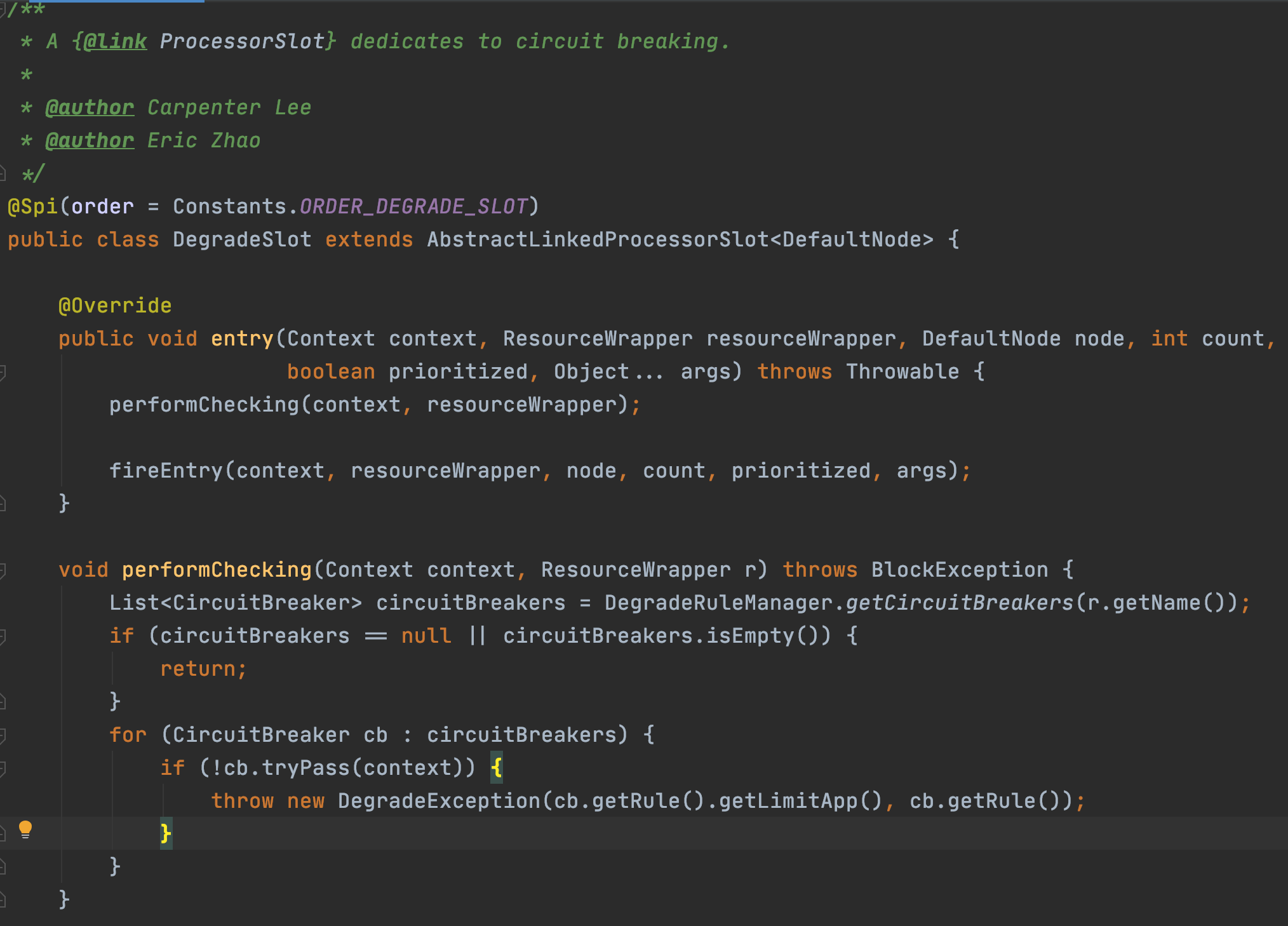
CircuitBreaker
大神对断路器的解释:https://martinfowler.com/bliki/CircuitBreaker.html
首先就看到了根据资源名称获取断路器列表,Sentinel的断路器有两个实现:RT模式使用ResponseTimeCircuitBreaker、异常模式使用ExceptionCircuitBreaker

public interface CircuitBreaker {
/**
* Get the associated circuit breaking rule.
*
* @return associated circuit breaking rule
*/
DegradeRule getRule();
/**
* Acquires permission of an invocation only if it is available at the time of invoking.
*
* @param context context of current invocation
* @return {@code true} if permission was acquired and {@code false} otherwise
*/
boolean tryPass(Context context);
/**
* Get current state of the circuit breaker.
*
* @return current state of the circuit breaker
*/
State currentState();
/**
* <p>Record a completed request with the context and handle state transformation of the circuit breaker.</p>
* <p>Called when a <strong>passed</strong> invocation finished.</p>
*
* @param context context of current invocation
*/
void onRequestComplete(Context context);
/**
* Circuit breaker state.
*/
enum State {
/**
* In {@code OPEN} state, all requests will be rejected until the next recovery time point.
*/
OPEN,
/**
* In {@code HALF_OPEN} state, the circuit breaker will allow a "probe" invocation.
* If the invocation is abnormal according to the strategy (e.g. it's slow), the circuit breaker
* will re-transform to the {@code OPEN} state and wait for the next recovery time point;
* otherwise the resource will be regarded as "recovered" and the circuit breaker
* will cease cutting off requests and transform to {@code CLOSED} state.
*/
HALF_OPEN,
/**
* In {@code CLOSED} state, all requests are permitted. When current metric value exceeds the threshold,
* the circuit breaker will transform to {@code OPEN} state.
*/
CLOSED
}
}
以ExceptionCircuitBreaker为例看一下具体实现
public class ExceptionCircuitBreaker extends AbstractCircuitBreaker {
// 异常模式有两种,异常率和异常数
private final int strategy;
// 最小请求数
private final int minRequestAmount;
// 阈值
private final double threshold;
// LeapArray是sentinel统计数据非常重要的一个结构,主要封装了时间窗口相关的操作
private final LeapArray<SimpleErrorCounter> stat;
public ExceptionCircuitBreaker(DegradeRule rule) {
this(rule, new SimpleErrorCounterLeapArray(1, rule.getStatIntervalMs()));
}
ExceptionCircuitBreaker(DegradeRule rule, LeapArray<SimpleErrorCounter> stat) {
super(rule);
this.strategy = rule.getGrade();
boolean modeOk = strategy == DEGRADE_GRADE_EXCEPTION_RATIO || strategy == DEGRADE_GRADE_EXCEPTION_COUNT;
AssertUtil.isTrue(modeOk, "rule strategy should be error-ratio or error-count");
AssertUtil.notNull(stat, "stat cannot be null");
this.minRequestAmount = rule.getMinRequestAmount();
this.threshold = rule.getCount();
this.stat = stat;
}
@Override
protected void resetStat() {
// Reset current bucket (bucket count = 1).
stat.currentWindow().value().reset();
}
@Override
public void onRequestComplete(Context context) {
Entry entry = context.getCurEntry();
if (entry == null) {
return;
}
Throwable error = entry.getError();
SimpleErrorCounter counter = stat.currentWindow().value();
if (error != null) {
counter.getErrorCount().add(1);
}
counter.getTotalCount().add(1);
handleStateChangeWhenThresholdExceeded(error);
}
private void handleStateChangeWhenThresholdExceeded(Throwable error) {
if (currentState.get() == State.OPEN) {
return;
}
if (currentState.get() == State.HALF_OPEN) {
// In detecting request
if (error == null) {
fromHalfOpenToClose();
} else {
fromHalfOpenToOpen(1.0d);
}
return;
}
List<SimpleErrorCounter> counters = stat.values();
long errCount = 0;
long totalCount = 0;
for (SimpleErrorCounter counter : counters) {
+= counter.errorCount.sum();
totalCount += counter.totalCount.sum();
}
if (totalCount < minRequestAmount) {
return;
}
double curCount = errCount;
if (strategy == DEGRADE_GRADE_EXCEPTION_RATIO) {
// Use errorRatio
curCount = errCount * 1.0d / totalCount;
}
if (curCount > threshold) {
transformToOpen(curCount);
}
}
static class SimpleErrorCounter {
private LongAdder errorCount;
private LongAdder totalCount;
public SimpleErrorCounter() {
this.errorCount = new LongAdder();
this.totalCount = new LongAdder();
}
public LongAdder getErrorCount() {
return errorCount;
}
public LongAdder getTotalCount() {
return totalCount;
}
public SimpleErrorCounter reset() {
errorCount.reset();
totalCount.reset();
return this;
}
@Override
public String toString() {
return "SimpleErrorCounter{" +
"errorCount=" + errorCount +
", totalCount=" + totalCount +
'}';
}
}
static class SimpleErrorCounterLeapArray extends LeapArray<SimpleErrorCounter> {
public SimpleErrorCounterLeapArray(int sampleCount, int intervalInMs) {
super(sampleCount, intervalInMs);
}
@Override
public SimpleErrorCounter newEmptyBucket(long timeMillis) {
return new SimpleErrorCounter();
}
@Override
protected WindowWrap<SimpleErrorCounter> resetWindowTo(WindowWrap<SimpleErrorCounter> w, long startTime) {
// Update the start time and reset value.
w.resetTo(startTime);
w.value().reset();
return w;
}
}
}
2.6 SystemSlot
校验逻辑主要集中在com.alibaba.csp.sentinel.slots.system.SystemRuleManager#checkSystem,以下是片段,可以看到,作为负载保护规则校验,实现了集群的QPS、线程、RT(响应时间)、系统负载的控制,除系统负载以外,其余统计都是依赖StatisticSlot实现,系统负载是通过SystemRuleManager定时调度SystemStatusListener,通过OperatingSystemMXBean去获取
/**
* Apply {@link SystemRule} to the resource. Only inbound traffic will be checked.
*
* @param resourceWrapper the resource.
* @throws BlockException when any system rule's threshold is exceeded.
*/
public static void checkSystem(ResourceWrapper resourceWrapper, int count) throws BlockException {
if (resourceWrapper == null) {
return;
}
// Ensure the checking switch is on.
if (!checkSystemStatus.get()) {
return;
}
// for inbound traffic only
if (resourceWrapper.getEntryType() != EntryType.IN) {
return;
}
// total qps 此处是拿到某个资源在集群中的QPS总和,相关概念可以会看初始化关于Node的介绍
double currentQps = Constants.ENTRY_NODE.passQps();
if (currentQps + count > qps) {
throw new SystemBlockException(resourceWrapper.getName(), "qps");
}
// total thread
int currentThread = Constants.ENTRY_NODE.curThreadNum();
if (currentThread > maxThread) {
throw new SystemBlockException(resourceWrapper.getName(), "thread");
}
double rt = Constants.ENTRY_NODE.avgRt();
if (rt > maxRt) {
throw new SystemBlockException(resourceWrapper.getName(), "rt");
}
// load. BBR algorithm.
if (highestSystemLoadIsSet && getCurrentSystemAvgLoad() > highestSystemLoad) {
if (!checkBbr(currentThread)) {
throw new SystemBlockException(resourceWrapper.getName(), "load");
}
}
// cpu usage
if (highestCpuUsageIsSet && getCurrentCpuUsage() > highestCpuUsage) {
throw new SystemBlockException(resourceWrapper.getName(), "cpu");
}
}
private static boolean checkBbr(int currentThread) {
if (currentThread > 1 &&
currentThread > Constants.ENTRY_NODE.maxSuccessQps() * Constants.ENTRY_NODE.minRt() / 1000) {
return false;
}
return true;
}
public static double getCurrentSystemAvgLoad() {
return statusListener.getSystemAverageLoad();
}
public static double getCurrentCpuUsage() {
return statusListener.getCpuUsage();
}
public class SystemStatusListener implements Runnable {
volatile double currentLoad = -1;
volatile double currentCpuUsage = -1;
volatile String reason = StringUtil.EMPTY;
volatile long processCpuTime = 0;
volatile long processUpTime = 0;
public double getSystemAverageLoad() {
return currentLoad;
}
public double getCpuUsage() {
return currentCpuUsage;
}
@Override
public void run() {
try {
OperatingSystemMXBean osBean = ManagementFactory.getPlatformMXBean(OperatingSystemMXBean.class);
currentLoad = osBean.getSystemLoadAverage();
/*
* Java Doc copied from {@link OperatingSystemMXBean#getSystemCpuLoad()}:</br>
* Returns the "recent cpu usage" for the whole system. This value is a double in the [0.0,1.0] interval.
* A value of 0.0 means that all CPUs were idle during the recent period of time observed, while a value
* of 1.0 means that all CPUs were actively running 100% of the time during the recent period being
* observed. All values between 0.0 and 1.0 are possible depending of the activities going on in the
* system. If the system recent cpu usage is not available, the method returns a negative value.
*/
double systemCpuUsage = osBean.getSystemCpuLoad();
// calculate process cpu usage to support application running in container environment
RuntimeMXBean runtimeBean = ManagementFactory.getPlatformMXBean(RuntimeMXBean.class);
long newProcessCpuTime = osBean.getProcessCpuTime();
long newProcessUpTime = runtimeBean.getUptime();
int cpuCores = osBean.getAvailableProcessors();
long processCpuTimeDiffInMs = TimeUnit.NANOSECONDS
.toMillis(newProcessCpuTime - processCpuTime);
long processUpTimeDiffInMs = newProcessUpTime - processUpTime;
double processCpuUsage = (double) processCpuTimeDiffInMs / processUpTimeDiffInMs / cpuCores;
processCpuTime = newProcessCpuTime;
processUpTime = newProcessUpTime;
currentCpuUsage = Math.max(processCpuUsage, systemCpuUsage);
if (currentLoad > SystemRuleManager.getSystemLoadThreshold()) {
writeSystemStatusLog();
}
} catch (Throwable e) {
RecordLog.warn("[SystemStatusListener] Failed to get system metrics from JMX", e);
}
}
private void writeSystemStatusLog() {
StringBuilder sb = new StringBuilder();
sb.append("Load exceeds the threshold: ");
sb.append("load:").append(String.format("%.4f", currentLoad)).append("; ");
sb.append("cpuUsage:").append(String.format("%.4f", currentCpuUsage)).append("; ");
sb.append("qps:").append(String.format("%.4f", Constants.ENTRY_NODE.passQps())).append("; ");
sb.append("rt:").append(String.format("%.4f", Constants.ENTRY_NODE.avgRt())).append("; ");
sb.append("thread:").append(Constants.ENTRY_NODE.curThreadNum()).append("; ");
sb.append("success:").append(String.format("%.4f", Constants.ENTRY_NODE.successQps())).append("; ");
sb.append("minRt:").append(String.format("%.2f", Constants.ENTRY_NODE.minRt())).append("; ");
sb.append("maxSuccess:").append(String.format("%.2f", Constants.ENTRY_NODE.maxSuccessQps())).append("; ");
RecordLog.info(sb.toString());
}
}
三、京东版最佳实践
3.1 使用方式
Sentinel使用方式本身非常简单,就是一个注解,但是要考虑规则加载和规则持久化的方式,现有的方式有:
•使用Sentinel-dashboard功能:使用面板接入需要维护一个配置规则的管理端,考虑到偏后端的系统需要额外维护一个面板成本较大,如果是像RPC框架这种本身有管理端的接入可以考虑次方案。
•中间件(如:zookepper、nacos、eureka、redis等):Sentinel源码extension包里提供了类似的实现,如下图

结合京东实际,我实现了一个规则热部署的Sentinel组件,实现方式类似zookeeper的方式,将规则记录到ducc的一个key上,在spring容器启动时做第一次规则加载和监听器注册,组件也做一了一些规则读取,校验、实例化不同规则对象的工作
插件使用方式:注解+配置
第一步 引入组件
<dependency>
<groupId>com.jd.ldop.tools</groupId>
<artifactId>sentinel-tools</artifactId>
<version>1.0.0-SNAPSHOT</version>
</dependency>
第二步 初始化sentinelProcess
支持ducc、本地文件读取、直接写入三种方式规则写入方式
目前支持限流规则、熔断降级规则两种模式,系统负载保护模式待开发和验证
<!-- 基于sentinel的降级、限流、熔断组件 -->
<bean id="sentinelProcess" class="com.jd.ldop.sentinel.SentinelProcess">
<property name="ruleResourceWrappers">
<list>
<ref bean="degradeRule"/>
</list>
</property>
</bean>
<!-- 降级或限流规则配置 -->
<bean id="degradeRule" class="com.jd.ldop.sentinel.dto.RuleResourceWrapper">
<constructor-arg index="0" value="ducc.degradeRule"/>
<constructor-arg index="1" value="0"/>
<constructor-arg index="2" value="0"/>
</bean>
ducc上配置如下:

第三步 定义资源和关联类型
通过@SentinelResource可以直接在任意位置定义资源名以及对应的熔断降级或者限流方式、回调方法等,同时也可以指定关联类型,支持直接、关联、指定链路三种
@Override
@SentinelResource(value = "modifyGetWaybillState", fallback = "executeDegrade")
public ExecutionResult<List<Integer>> execute(@NotNull Model imodel) {
// 业务逻辑处理
}
public ExecutionResult<List<Integer>> executeDegrade(@NotNull Model imodel) {
// 降级业务逻辑处理
}
3.2 应用场景
组件支持任意的业务降级、限流、负载保护
四、Sentinel压测数据
4.1 压测目标
调用量:1.2W/m
应用机器内存稳定在50%以内
机器规格: 8C16G50G磁盘*2
Sentinel降级规则:
count=350-------慢调用临界阈值350ms
timeWindow=180------熔断时间窗口180s
grade=0-----降级模式 慢调用
statIntervalMs=60000------统计时长1min
4.2 压测结果

应用机器监控:
压测分为了两个阶段,分别是组件开启和组件关闭两次,前半部分是组件开启的情况,后半部分是组件关闭的情况



应用进程内存分析,和sentinel有关的前三对象是
com.alibaba.csp.sentinel.node.metric.MetricNode





com.alibaba.csp.sentinel.CtEntry


com.alibaba.csp.sentinel.context.Context



4.3 压测结论
使Sentinel组件实现系统服务自动降级或限流,由于sentinel会按照滑动窗口周期性统计数据,因此会占用一定的机器内存,使用时应设置合理的规则,如:合理的统计时长、避免过多的Sentinel资源创建等。
总体来说,使用sentinel组件对应用cpu和内存影响不大。



